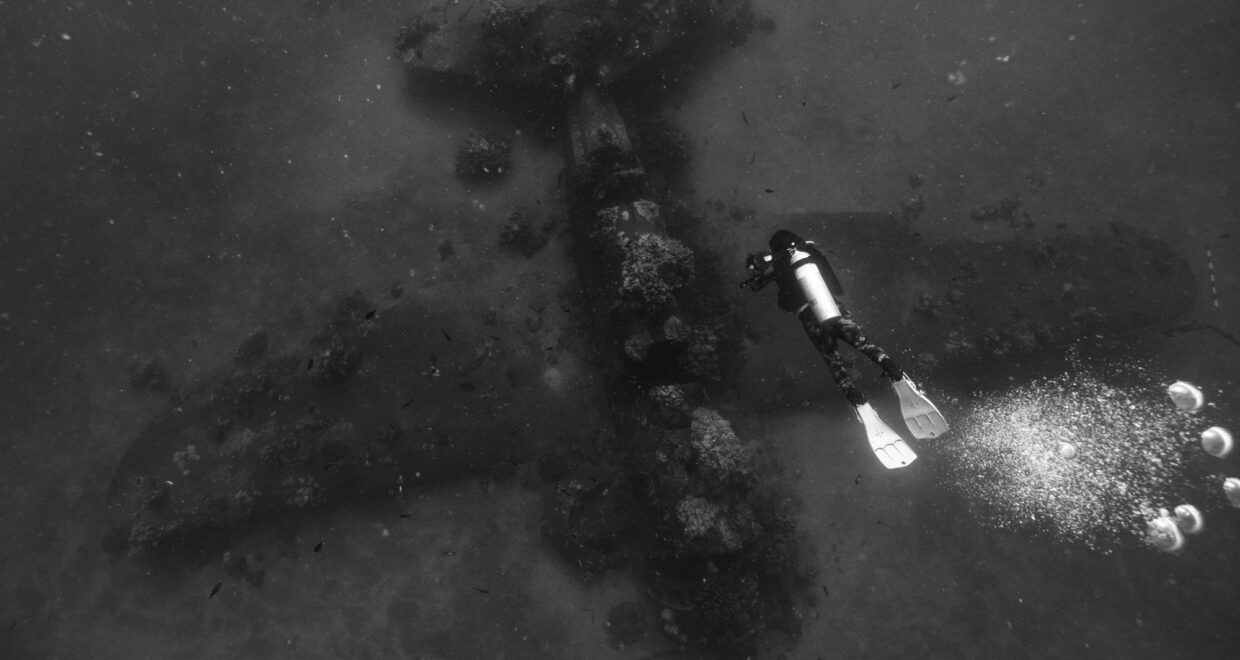Submerged Aircraft Wrecks: A Plea for Appropriate Site Management
Famed Swiss-French architect Le Corbusier once wrote “war was the hellish laboratoryin which aviation became adult and was shaped to flawless perfection.” Nowhere is the more apparent than in the advancements in aircraft technology associated with World War II (WWII). Less than 40 years from the Wright Brother’s first flight, competition of the highest stakes, combined with a strategic emphasis on airpower supremacy and an unprecedented mobilization of the labor force, spurred a proliferation of aircraft manufacturing. Nearly 300,000 aircraft were produced in the United States alone, covering the entire spectrum of military aircraft. From single-seat trainers to the mighty B29 Superfortress, which simultaneously brought the war to a conclusion and ushered in the atomic age, the assault on the skies fundamentally changed the nature of combat. As such, these flying machines have been bestowed with a certain prestige in the public consciousness, a status dually reinforced by the implicit dangers in aviation. Whether the result of enemy fire, weather hazards, or the occasional gremlin, estimates for downed planes numbers in the hundreds of thousands, with many finding their way into the world’s oceans and lakes.

Image Credit: Jenny Adler.
Eight decades later, these wreck sites serve as the physical embodiment of both human sacrifice and technological innovation. As physical manifestations of the aerial carnage, aircraft wrecks, whether submerged or on land, can act as ‘touchstones’ for site visitors, connecting modern day stakeholders with the traumatic events of the past. Whether driven by national pride, historical interests, or an enthusiasm for military remains, WWII aircraft crash sites have long attracted the attention of the public. For submerged wrecks specifically, some may be drawn to the novelty of seeing an airplane, a machine designed for flight, submerged on the seafloor. In this way, the wrecks’ innate memorialization of airpower is presented in a drastically different environmental context than it was originally intended. With WWII slipping further from the present, quickly approaching the century mark, site stewardship has increasingly been delegated to archaeologists and other cultural resource managers. This necessitates a proper recognition that aircraft are fundamentally different than wooden or iron-based ships, the traditional focus of underwater archaeologists.
Approaches to site management, therefore, must account for the material differences, namely the use of aluminum as the primary metal used in aircraft construction. If in situ preservation is to continue as the preferred practice in underwater archaeology, then research into the natural threats, including generalized and microbiologically-influenced corrosion, that render these sites as heritage at risk would be highly beneficial. Accomplishing this goal will require archaeologists to move beyond the confines of their discipline and seek out interdisciplinary collaborations. The fields of electrochemistry and microbiology offer the tools to empirically assess site transformation processes attributed to the natural environment, thus, unravelling the complexity of the physio-and biochemical processes responsible for aluminum corrosion. From there, more informed decisions can be made, particularly as it relates to enacting mitigation measures aimed at preserving submerged aircraft wrecks for future generations. Yet, before this lofty goal can even be considered, the development of sound collection methods is needed.
An example pertaining to microbial communities on aircraft wrecks can be found in the article “In Situ Biofilm Collection: Implications for the Management of Historic Submerged Aircraft Wrecks” – out now in open access journal Advances in Archaeological Practice.






